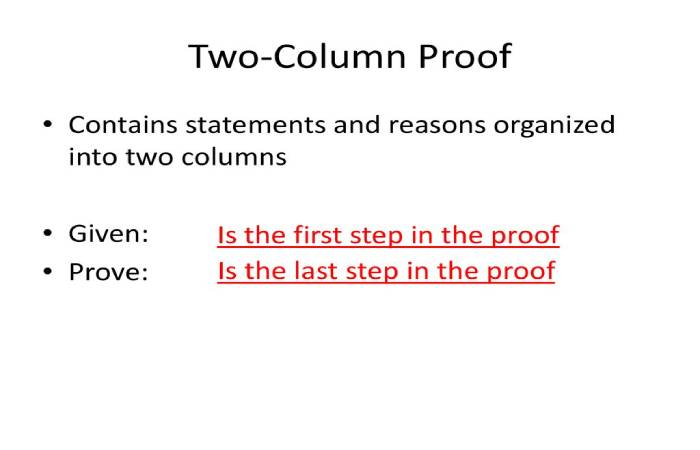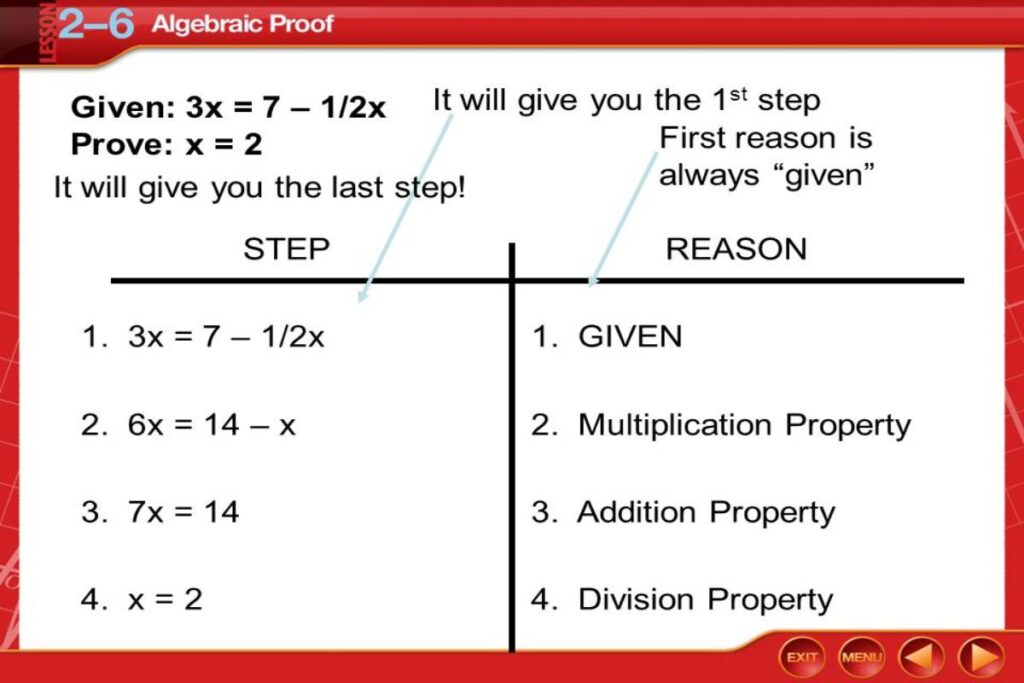The Last Step In A Proof Contains The

The Structure of a Proof
A two-column geometric proof consists of a list of statements and the reasons that we know those statements are true. Every step of the proof is every conclusion that is made in a row in the two-column proof. The declarations that can be made are listed in a column on the left. And the reasons for which the statement can be made are listed in the right column.
Geometric proofs can be printed in one of two ways: two columns, or a section. A paragraph proof is only a two-column resilient written in verdicts. However, since it is easier to leave ladders out when writing a paragraph proof, we’ll learn the two-column method.
The Last Step in a Proof Contains The Writing a proof consists of a few different steps.
- The figure may already be drawn for you, or you may have to draw it yourself. Draw the figure that exemplifies what is to be proved.
- Now you have a start and an end to the proof. List the given declarations, and then list the deduction to be proved.
- This is the step of the resistance in which you actually find out how the proof is to be made. And whether or not you are able to prove what is asked. Make the figure according to what you can deduce about it from the information given. Corresponding sides, angles, etc. Should all be noticeable so that you can see by hand what be printed in the proof to convince the reader that you are right in your conclusion.
- Write the steps down prudently, without skipping even the humblest one. some of the first ladders are often the given declarations (but not always). And the last step is the conclusion that you set out to be prove. The Last Step In A Proof Contains a sample proof looks like this.
Anytime it is helpful to refer to sure parts of a proof. You can include the numbers of the appropriate statements in parentheses after the reason. Notice that when the SAS postulate was used. The number in parentheses corresponds to the numbers of the statements in which each side and angle was shown to be congruent.
The Last Step in a Proof Contains The Direct Proof
For example, you strength state in a direct proof that two viewpoints sum to 90 degrees, and in the next line, state that they are balancing. In the reasons, pillar. You would write “Two viewpoints whose sum is 90 degrees are balancing.” Direct proof is deductive cognitive at work. Throughout a direct proof, the declarations that are made are specific examples of the more general situations, as is explained in the “reasons” column.
Think of this reason as a provisional statement “if p, then q” where p is” angles sum to 90 degrees” and q is “ they are complementary.” The first statement, that the sum of the angles to 90 degrees. Is the hypothesis of the conditional statement. If the conditional statement is true, which we know it is, then q the next statement in the proof, must also be true. Which we know it is, then q, the next statement in the proof, must also be true. In this way, direct proof makes use of deductive reasoning.
Also Read : quality practices must be carried out


